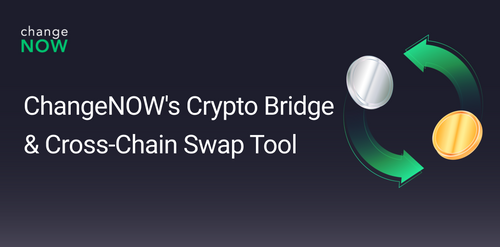Filecoin (FIL) Coin Review 2022
Unfortunately, many rely on centralized service providers such as Google with its Google Drive or Dropbox for their storage needs. But these companies have a single point of failure. If their servers go down, your files become inaccessible and could even be lost. A different approach is needed.
Thanks to Filecoin, there is now a decentralized and distributed cloud service provider that mitigates the risks of using centralized variants. In contrast to some crypto projects that have failed to keep their promises of launching a viable project, Filecoin is already present worldwide.
Best of all, anyone can be a part of the ecosystem either as an end-user or a service provider. So let’s see what you can do with Filecoin and its native FIL token and how much you can earn with it.

About Filecoin (FIL)
Filecoin is a decentralized network and cloud storage provider launched in 2017, but it has been in development since 2014. The project held one of the most successful ICOs in cryptocurrency history in September 2017, when it raised over $250 million. However, it took 3 years until the mainnet finally launched in October 2020.
Filecoin is one of many solutions developed by the R&D lab Protocol Labs to help decentralize the internet. But that’s not all it is. Filecoin goes hand in hand with the InterPlanetary File System (IPFS) and acts as its incentive layer. This ecosystem uses FIL as its main currency and a reward mechanism for network participants.
The problem with the most popular data storage providers like Google and Amazon is that they are centralized and greedy. Besides, they can easily be motivated by money to shut down or remove access to content that those in power don’t want you to see. They have the authority to set prices and make decisions on who can use their services. That is not a worry with the decentralized and open-source nature of Filecoin.
FIL and IPFS want an open and globally-accessible market no matter where you are. Thanks to local storage possibilities, it’s faster, less expensive, and more efficient to utilize the services of a decentralized provider who stores the data in your geographical region.
Filecoin (FIL) Team
Filecoin’s founder is an American computer scientist Juan Benet. This is the same man who also created the InterPlanetary File System (IPFS). The community-run Filecoin Foundation takes care of the project’s funding and development needs. This independent organization doesn’t own Filecoin but provides the needed support for the network to operate successfully.
The Filecoin Foundation has a Board of Directors who are the primary decision-makers. It’s made up of four key personnel:
- Executive Director Brian Behlendorf
- Chief Technology Officer Nicole Wong
- General Counsel member Marta Belcher
- Electronic Privacy Attorney Marcia Hofmann
An experienced group of thought-leaders from the web3 and open-source industries provide the needed guidance for the Filecoin project. This advisory team consists of Katie Biber, Wendy Hanamura, Joe Lubin, Sandra Ro, Alex Feerst, Brewster Kahle, and Georgia Quinn.
Filecoin (FIL) Roadmap
Filecoin’s original roadmap details all the goals the network has reached so far. The first devnet testing environments were launched in March 2019. Then, from June to November 2019, there were several other testnet launches before the first public testnet went live in December 2019. Finally, Filecoin introduced the community to its mainnet in October 2020.
Here is the current and official community roadmap where you can find everything related to future developments of Filecoin. As you can see, it’s divided into 3 segments: core protocol enhancements, implementation enhancements, and featured ecosystem projects.
In 2022, we can expect work to be done on Filecoin’s Virtual Machine and improved scaling, thanks to recursive proofs. The Lotus, Forest, and Venus network implementations are also scheduled to be improved.
Several ecosystem projects are in the works. First, Multi-Chain Payments will allow clients to pay for services with different cryptocurrencies. A Privacy Storage Platform is being developed for sensitive client data. Lastly, the Filscan data browser will introduce a data analysis center whose tools will help improve the entire system.
Filecoin (FIL) Network
Filecoin is developed on top of the IPFS protocol, which works similarly to Bittorent and allows individuals to receive, send, and store data in a decentralized manner. The FIL coin is a reward to those who help with data storage.
The Filecoin blockchain is a database that doesn’t store user data. Instead, it only keeps track of transactions, balances, and agreements reached between individual users and storage miners.
To operate efficiently and securely, Filecoin uses two consensus algorithms: Proof of Replication and Proof of Spacetime. The first one (PoRep) involves proving that the storage miner has properly stored a piece of data. This cryptographic evidence is saved on the Filecoin blockchain. The second mechanism (PoSt) entails proving the data is still kept whenever someone needs to access those records. Proof of Spacetime ensures that a storage provider doesn’t delete the files for the duration of a contract.

How To Store and Retrieve Data from Filecoin?
To store anything on the Filecoin network, the client needs to find a suitable decentralized storage provider and set the terms for the contract. You have to decide how long you want the data stored and how much you are willing to pay, among other things. There are thousands of providers to pick from that are part of the larger marketplace.
If your terms are acceptable, one of the providers will take the deal and ask you to upload the data. The acceptance of the data gets verified and recorded to the blockchain. When you want to access your files, you need to pay some FIL to retrieval miners who will locate and find your data. Similarly to Bitcoin mining fees, if you pay more, you will get what you asked for more quickly, and vice versa.
Suppose the data is available to the general public. In that case, it can be replicated and stored by other storage providers to make it easier to retrieve in different geographical regions. In addition, individuals can apply and provide storage services and earn a share of FIL rewards for their efforts.
How to Mine Filecoin (FIL)
All Filecoin mining rewards are paid out in the native FIL token. But the process is somewhat different than with other cryptocurrencies. To mine FIL, you aren’t required to provide computational power to secure the blockchain. Instead, you need plenty of hard drive space and a reliable internet connection.
Filecoin miners are tasked with storing client data, for which they get compensated accordingly. A stake of FIL coins is also required to participate in mining activities. This is a guarantee that the miner will provide reliable storing services. Failing to prove that customer data is still saved on your hardware will result in having part of your stake slashed.
The staking amount is proportional to the percentage of the storage capacity a miner provides to the network. If this number is 2%, you need to stake 2% of the total amount of FIL being staked on the blockchain. The coins can be deposited immediately, or an agreement can be made where a miner provides a part of the collateral up front and pays the rest from his future block rewards.
Storage providers earn several types of rewards. First, there is the storage fee paid by the clients for saving their data. Block rewards are given to miners for producing new blocks with proof of data storage. This sum depends on how big or small your storing capacity is. Lastly, there are retrieval fees for retrieving the requested data.
Filecoin (FIL) 2022 Price Prediction
Filecoin’s current value is between $5 and $5.50 in mid-June 2022. Let’s check out what trading analysts expect from FIL in the future.
DigitalCoinPrice
DigitalCoinPrice sees many sell signals at the moment, but that trend is short-lived. They expect better results towards the end of the year, with the value bouncing between $7.10 and $7.59. Positive price actions are predicted from 2023 to 2025, with the maximum valuation believed to be over $12/coin.
A reversed trend in 2026 could cause the value to drop down under $10 before supply and demand factors take the price back up again. DigitalCoinPrice market analysts believe FIL will be worth over $20 in 2029, and the price might jump to almost $30 per token in 2031.
TradingBeasts
TradingBeasts forecasters believe Filecoin has reached its bottom, and the coin can only go up from here. According to their technical analysis, the average price for the remainder of 2022 should be around $7.50. In 2023, they expect FIL to trade between $10 and $12 a coin.
There are no signs of reversals in 2024. Instead, it looks like the upward trend will continue, with the maximum price being around $17.80. They predict that 2025 is when Filecoin will breach the $20 line, but its average value is expected to be between $15 and $16.
How Can I Buy and Trade Filecoin (FIL)?
Filecoin (FIL) Wallets
Many wallets can be used for storing your FIL coins to keep them safe. Filecoin is supported by both software and hardware wallets. Let’s take a look at some recommended options.
- Atomic Wallet is a non-custodial multicurrency app available for desktop and mobile devices. It allows you to buy, store, and stake your crypto.
- Lotus is a full node client developed and maintained by the Protocol Labs Team. It allows you to operate your Filecoin full node and become a storage provider.
- FIL can also be secured in the safe environment of Ledger hardware wallets. Unfortunately, Ledger doesn’t offer native support for the asset, but users can utilize and connect to the Glif web interface.
Besides the above clients, Filecoin has been successfully integrated with Math Wallet, Trust Wallet, MetaMask, and Binance Chain Wallet.
Filecoin (FIL) Crypto Exchanges
To purchase Filecoin quickly and securely, head over to the ChangeNOW swaps platform to perform the transaction within just a few minutes. ChangeNOW is a privacy-focused and non-custodial platform where you are in control of your money at all times.
FIL has significant trading volume on several other centralized cryptocurrency exchanges as well. The most popular ones include Binance, Huobi Global, Gate.io, Coinbase, KuCoin, Bybit, Kraken, Gemini, etc.
Filecoin (FIL) Summary
Filecoin has managed to decentralize the cloud storage industry with independent data providers who operate from all over the world. As a result, ordinary people can become part of this network and store their most important information.
It becomes quicker, cheaper, and easier to retrieve data from a storage provider in your own neighborhood. The incentive structure of the network rewards stakeholders in proportion to how much storing capacity they have made available and how much data they retrieve for their clients.
Users who store their data with a storage provider don’t have to fear it will be deleted. Breaching the terms of a contract will result in part of their FIL stake being slashed. A reliable decentralized cloud platform was desperately needed to keep our data private and censorship resistant.



